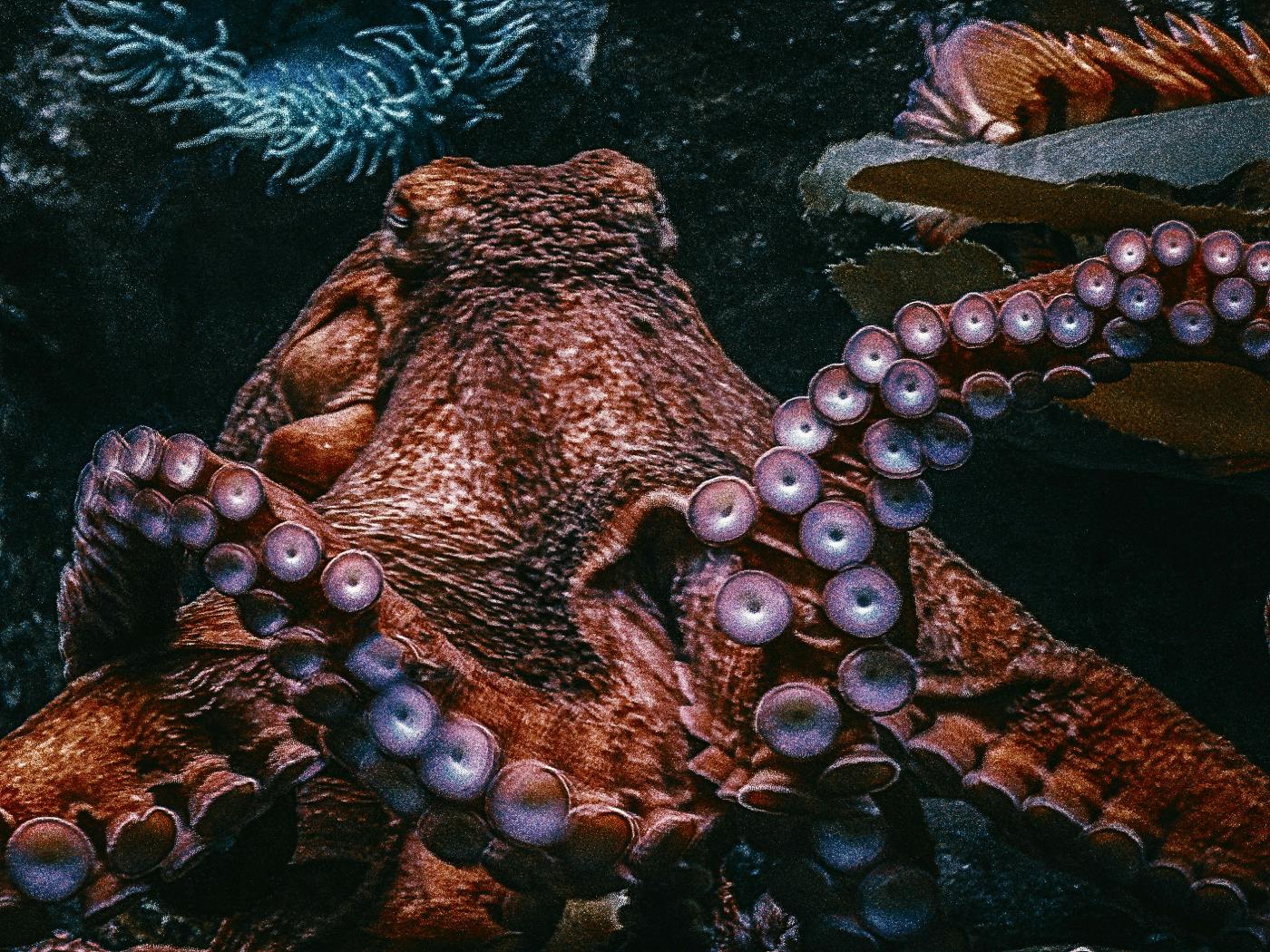
The word “influencer” used to mean someone with expertise or authority. Now, it refers to anyone with a ring light, an internet connection, and an audience willing to listen. Not all influencers are grifters—some genuinely share useful content—but the ones who make millions?
The Rise of the Influencer Messiah
Once upon a time, in a world before hashtags and ring lights, people got their health and wellness advice from doctors, scientists, and that one friend who read actual books. It wasn’t perfect—bad advice existed, but at least it came from people who had spent more time studying than perfecting their selfie angles.
Back then, if you wanted to know whether apple cider vinegar could cure all ailments, you’d ask a doctor. The doctor would say, “No, but it’s decent for salad dressing.” And that would be the end of it. There were no dramatic “I healed myself!” Instagram posts, no curated morning routines with dim lighting and whispered affirmations—just facts.
Of course, misinformation isn’t new. Enter the snake oil salesman. The term has become shorthand for frauds and scammers, but here’s the twist: real snake oil actually worked—if you got it from the right snake. The original Chinese water snake oil, rich in omega-3s, was genuinely effective for joint pain and inflammation. But when American hucksters ran out of those snakes, they swapped in rattlesnake oil, which did absolutely nothing. And thus, the great tradition of selling people useless garbage in pretty bottles began.
Which brings us to influencers.
The word “influencer” used to mean someone with expertise or authority. Now, it refers to anyone with a ring light, an internet connection, and an audience willing to listen. Not all influencers are grifters—some genuinely share useful content—but the ones who make millions? They’ve mastered a specific formula: sell a lifestyle, push a solution, and create a sense of belonging so strong that their followers mistake marketing for mentorship.
They don’t just recommend products. They promise a better life. And if you just follow their advice—buy their supplements, repeat their affirmations, trust their process—you, too, can reach enlightenment.
Fast forward to today, and the rattlesnake oil salesmen of the past have been reborn as influencers. They don’t sell snake oil anymore—they sell detox teas, manifestation courses, and alkaline water that costs more than gasoline. They promise transformation through clean living, mindset shifts, and subscribing to their Patreon. They don’t just sell products—they sell identity.
The formula is simple:
- Share a compelling backstory. (“I was just like you—lost, unhealthy, unhappy!”)
- Reveal the one thing that changed everything. (Spoiler: It’s never “hard work” or “actual medicine.”)
- Sell you the secret. (Buy the eBook, the supplement, the course, the healing crystals.)
It starts innocently. Maybe they really did have a health breakthrough. Maybe they genuinely believe in what they’re preaching. But then the sponsorships roll in. The audience grows. And suddenly, the line between inspiration and indoctrination gets very blurry.
They become infallible, their followers become disciples, and any skepticism is met with accusations of “toxic negativity” or, worse, “not believing in yourself.” And if there’s one thing influencers cannot abide, it’s a skeptic ruining their vibe.

The Belle Gibson Playbook: How to Sell a Lie
If there were a masterclass on how to fabricate an entire wellness empire from thin air, Belle Gibson would be the instructor. Her story had everything: tragedy, triumph, a miraculous recovery, and—most importantly—an audience desperate to believe in it.
For those unfamiliar, Belle Gibson was an Australian influencer who rose to fame by claiming she had cured her terminal brain cancer through natural remedies, clean eating, and alternative therapies. She built a brand around her “journey,” launching a successful wellness app and cookbook while gathering an army of devoted followers. The only problem? She never had cancer.
And yet, she had people convinced. Not just a handful of conspiracy theorists—thousands of people, major publishers, even tech giants like Apple, which featured her app The Whole Pantry as a beacon of health and self-healing.
So how did she pull it off? Simple. She followed the classic influencer grift playbook:
1. Craft a Story So Compelling, People Want It to Be True
People don’t just buy into influencers because of their products—they buy into their stories. Gibson didn’t just claim she healed herself; she made it a personal battle against the cold, uncaring world of traditional medicine. She painted herself as a warrior who had defied doctors and “big pharma,” which, conveniently, couldn’t confirm or deny her claims because of “privacy.”
Her story was gripping: a young, beautiful woman overcoming a death sentence through sheer willpower and turmeric. It was inspirational. It was cinematic. And that was exactly the problem—real life doesn’t follow a Hollywood script, but when someone sells hope in a perfectly packaged narrative, people are eager to buy in.
2. Become the Walking, Talking Proof of Your Own Claims
The best grifters don’t just tell you what works—they are the evidence. Gibson claimed she was living proof that modern medicine was unnecessary. Never mind that she wasn’t getting regular scans, consulting actual oncologists, or showing any medical records—her glowing skin and smoothie-filled Instagram feed were the evidence.
It’s the same trick used by wellness influencers today. They claim their diets, supplements, or workout plans will transform your life while conveniently attributing any existing health and beauty advantages to their regimen, not genetics or luck. They are their own product.
3. Make It a Movement, Not Just a Method
This is where things go from simple deception to full-on cult psychology. Gibson wasn’t just selling a health regimen—she was creating a belief system. Her followers weren’t just customers; they were devoted believers in a world where medicine was the enemy and “natural healing” was the only true path.
This does two things: it makes followers feel like they’re part of something bigger, and it makes it easier to dismiss critics. Anyone questioning the claims isn’t “asking for evidence”—they’re being negative, brainwashed, or just “not open-minded enough.”
4. Invoke Charity to Silence Doubt
One of the most insidious parts of Gibson’s scheme was her claim that she was donating proceeds to charity. This was brilliant—not just morally reprehensible, but strategically brilliant. Any skepticism about her methods was immediately shut down by the idea that she was helping people.
“Oh, you don’t believe she cured herself? She’s giving money to sick children. Why are you attacking her?”
Except, of course, she wasn’t actually donating anything.
5. If You Get Caught, Just… Disappear for a While
Eventually, reality caught up. Investigators exposed her lies, fines were issued, and her brand collapsed. But like many influencers caught in deception, she never really faced serious consequences. She faded from the public eye, occasionally resurfaced with half-hearted justifications, and continued living her life.
And here’s the scariest part: even after she was exposed, some people still believed her. That’s the power of a well-crafted lie—it doesn’t just fool people. It makes them want to stay fooled.
The Influencer Trap: When Inspiration Becomes a Sales Pitch
At first, it always feels innocent.
Maybe you follow an influencer because they post motivational content or share helpful tips about fitness, wellness, or productivity. They’re just a regular person, right? They struggled, they learned, and now they want to help you. It feels like a friend giving advice over coffee—casual, no pressure.
Then, something changes.
One day, you’re watching their morning routine video, and suddenly, they’re raving about a protein powder you need to try. Next, it’s a supplement. Then a masterclass. Then, a members-only coaching program with “limited spots left.” Before you know it, their entire brand has morphed into an endless infomercial wrapped in the language of empowerment.
At what point did this shift happen? When did their journey become your sales funnel?

The Subtle Shift from Authenticity to Agenda
Most influencers don’t start as salespeople—they start as storytellers. They share personal experiences, struggles, and lessons. And that’s what makes them so believable. They appear vulnerable, relatable, and real.
But here’s the catch: Influence is currency. Once an influencer builds a loyal audience, they don’t just have followers—they have buyers. And brands know this. Suddenly, the influencer’s biggest asset isn’t their story—it’s their ability to convince you to open your wallet.
And because their influence is built on trust, the sales pitches don’t feel like sales pitches. They feel like recommendations from a friend. And that’s what makes them so effective.
“I’m Not Selling—Just Sharing My Experience”
This is the golden rule of influencer marketing: Never admit you’re selling something. Instead, it’s all about “sharing what works for me.”
A few classic phrases to look out for:
- “I’ve been getting so many DMs about my skincare routine…”
- “I was skeptical at first, but wow, I am blown away!”
- “I used to struggle so much, but then I found this amazing product…”
- “I just want to help people like me who are struggling.”
It’s a familiar script because it works. It keeps the illusion of authenticity intact while nudging you toward a purchase. And even if the product is useless, the influencer doesn’t take the blame. After all, they never said it would work for you—just that it worked for them.
The Emotional Hook: If You Don’t Buy, Are You Even Trying?
One of the most insidious parts of influencer marketing is how it weaponizes self-improvement. The message isn’t just “Here’s a product”—it’s “Here’s the answer you’ve been looking for.”
If you’re unhappy, unhealthy, or unsuccessful, it’s not because life is hard. It’s because you haven’t followed the right steps. And guess what? The influencer has the steps.
The underlying message:
- If you really wanted to change, you’d buy this program.
- If you really cared about your health, you’d try this supplement.
- If you really wanted success, you’d invest in this mindset course.
And just like that, inspiration becomes manipulation.
The Guilt-Proof Sales Strategy
Here’s where it gets even trickier: Influencers set up their sales pitch so that if their product doesn’t work, it’s your fault.
Tried the detox tea but didn’t lose weight? You didn’t drink enough water.
Followed the mindset course but still struggling? You didn’t believe in yourself enough.
Didn’t manifest financial freedom? You had negative energy blocking abundance.
This creates a win-win situation for the influencer. If you see results, they take credit. If you don’t, they still take credit because, obviously, you didn’t follow their method correctly.
It’s a brilliant (and completely unregulated) marketing strategy.
When Inspiration Becomes a Cult Mentality
At a certain point, loyalty to an influencer starts to look less like fandom and more like blind devotion. Criticism isn’t just dismissed—it’s attacked.
If an influencer gets called out for false claims, they don’t defend their evidence—they rally their followers to protect them. Detractors are labeled “haters,” “jealous,” or part of some larger conspiracy that doesn’t want you to “wake up.”
This is how influencers keep their grip on their audience. The moment you question them, you’re the enemy. And if an entire community is built around a shared belief, leaving isn’t just about unfollowing—it feels like abandoning an identity.
And that’s when you know inspiration has become something else entirely.

The Responsibility Question: Should We Blame the Influencer or the Audience?
Here’s the big, uncomfortable question: Who’s really at fault when an influencer deceives their audience?
Is it the influencer for knowingly spreading misinformation and profiting off of people’s trust? Or is it the audience for blindly believing in someone with no actual expertise?
On the surface, it’s easy to blame the influencer. After all, they’re the ones selling the snake oil (or, more accurately, the overpriced gut health gummies). But things aren’t that simple—because influence only works if people allow themselves to be influenced.
The Case for Blaming the Influencer
Let’s start with the obvious: Influencers know exactly what they’re doing.
They understand the power of their words, the trust they’ve built, and how to make a sale without looking like they’re making a sale. They’ve mastered the art of persuasion, and in many cases, they deliberately withhold important details (like the fact that their "miracle diet" is mostly Photoshop and good lighting).
Influencers also operate in a completely unregulated space. Unlike doctors, financial advisors, or therapists, they don’t have to back up their claims with real evidence. They can recommend “cancer-curing” smoothies, untested supplements, and dangerous diets with zero accountability. And when someone inevitably calls them out, they can fall back on the ultimate loophole:
"I’m not giving advice. I’m just sharing my journey."
This is how they dodge responsibility—by positioning themselves as relatable storytellers instead of authority figures. It’s a convenient excuse, but at some point, when you have millions of followers hanging on your every word, the “I’m just sharing” defense doesn’t hold up.
A Quick Lesson on the Word ‘Grift’
Before we go any further, let’s take a moment to appreciate the word grift. It’s one of those words that just sounds like what it is—slick, sneaky, just a little bit dirty.
A grift is a scam, a swindle, a clever little deception designed to separate people from their money, trust, or common sense. The term dates back to at least the early 20th century, often associated with con artists and street hustlers who made a living off of quick, deceptive tricks.
The classic grifter doesn’t steal outright. They don’t rob you at gunpoint. Instead, they make you want to hand over your money. They tell you a story, pull you in, and make you believe that what they’re offering is exactly what you need.
And this is where influencers come in. The modern grift doesn’t happen in a back alley—it happens on a perfectly curated Instagram feed. The snake oil salesmen of the past have swapped out their wagons for ring lights and brand deals, but the game is the same: convince people they need something they don’t, and make sure they blame themselves when it doesn’t work.
The Case for Blaming the Audience
And yet… influencers wouldn’t exist without an audience willing to believe them.
We love to think of ourselves as rational, critical thinkers, but the truth is, we want to believe in easy answers. We want to think that success, health, happiness—all the things we struggle with—can be solved with a simple fix.
It’s why fad diets take off. It’s why self-help gurus thrive. It’s why Belle Gibson convinced thousands of people that she cured terminal cancer with vegetables.
No one forced people to buy into her story. No one forced them to ignore actual medical professionals in favor of an Instagram post. And yet, they did—because hope is a powerful drug, and influencers know exactly how to sell it.
At some point, personal responsibility has to come into play. It’s easy to blame influencers, but what about the people who continue to buy into their claims even after they’ve been debunked? What about the followers who attack critics, who refuse to question, who defend their favorite influencer like a member of the family?
The Real Answer: It’s Both
The truth is, it takes two to make a grift work. The influencer has to sell the illusion, and the audience has to be willing to buy in. One doesn’t exist without the other.
But that raises an even bigger question: What can be done about it? Should influencers be regulated? Should platforms be responsible for fact-checking claims? Or is the burden completely on the audience to be more skeptical?
Because right now, we’re living in a world where someone with no medical degree can convince millions of people that essential oils cure diseases, while actual doctors are being drowned out by the algorithm.
And that’s a dangerous place to be.

How to Avoid Being Suckered by an Influencer
So, now that we’ve unpacked the influencer grift, the next logical question is: How do you avoid falling for it? How do you separate genuine recommendations from manipulative sales pitches? How do you make sure you’re not the next person drinking charcoal water because some wellness guru swears it’s the secret to eternal youth?
The good news is, avoiding the influencer trap isn’t that hard—if you know what to look for. Here are some basic survival rules for navigating the world of online influence without losing your money, common sense, or grip on reality.
1. The More Personal the Story, the More Skeptical You Should Be
A tragic backstory and a miraculous transformation are the hallmarks of a good con. If an influencer claims they went from broke and sick to wildly successful overnight thanks to one simple fix, that’s a red flag. Life doesn’t work like that. People don’t cure diseases by manifesting harder.
2. If It Sounds Too Good to Be True, It Is
If someone claims they have the secret to weight loss, happiness, financial success, or immortality, remind yourself that if such a thing existed, you wouldn’t be hearing about it from someone filming content in their car.
3. Always Follow the Money
Who benefits from you believing this? If an influencer is promoting a product, they’re getting paid—either through direct sponsorships, affiliate links, or brand partnerships. That doesn’t automatically mean they’re lying, but it does mean their enthusiasm might not be entirely organic.
4. Beware of the ‘Haters and Doubters’ Defense
If someone can’t handle any criticism of their claims without calling their critics “haters,” that’s a giant red flag. Science welcomes skepticism. Scammers shut it down. If their followers attack anyone who asks for proof, you’re not dealing with a healthy community—you’re dealing with a cult.
5. Ask Yourself: Are They Selling, or Are They Helping?
Real experts provide information first, then let you decide what to do with it. Influencers who are constantly pushing products, courses, or exclusive memberships aren’t just being helpful—they’re building a business.
6. Do Some Actual Research
It’s shocking how many people will blindly trust an influencer but refuse to spend five minutes verifying a claim. If someone is telling you that mainstream medicine is a scam but their healing crystals can cure your kidney disease, cross-check that with an actual doctor.
7. Trust Your Gut, Not Their Vibe
Influencers are good at selling you a feeling. They make you believe they’re your friend, that they care about you, that they want what’s best for you. But their job isn’t to be your friend—it’s to sell an image, a product, or an idea. Just because someone seems nice, relatable, or trustworthy doesn’t mean they actually are.
8. Remember: You Don’t Need to Buy Your Way to a Better Life
A lot of influencers thrive on making people feel inadequate. You’re not eating clean enough, you’re not working hard enough, you’re not manifesting correctly. And conveniently, they have exactly the thing you need to fix yourself. The truth? You don’t need to spend $50 on a glow-up journal or buy a supplement made from powdered moon dust to be a functional human being.
Not All Influencers Are Frauds: How to Spot the Good Ones
After all this talk of grifts, scams, and rattlesnake oil, you might be thinking, Are all influencers just charismatic salespeople in disguise? The short answer: No. The longer answer: Like any profession, some do it with integrity, and some take advantage of people. The trick is knowing how to tell the difference.
Signs of a Legit Influencer
- They Provide Value Without a Price Tag<br />A good influencer doesn’t hold information hostage behind a paywall or a “limited-time offer.” They share knowledge freely, whether it’s in-depth posts, educational videos, or thoughtful discussions. If someone’s content is useful even if you don’t buy anything, that’s a good sign.
- They Cite Actual Experts and Evidence<br />If they’re discussing health, do they reference medical studies and professionals? If they’re giving financial advice, do they have credentials or cite legitimate sources? A reputable influencer doesn’t expect you to trust them just because they “feel” right. They back up their claims with more than just personal anecdotes.
- They Disclose Sponsorships Clearly<br />Ever notice how some influencers try to sneak in their sponsorships with vague statements like, “So many of you have been asking about my skincare routine…”? The legit ones don’t do that. They’re upfront about brand deals, affiliate links, and partnerships. If an influencer makes it clear when they’re being paid, it means they respect their audience enough to be transparent.
- They Don’t Promise Unrealistic Results<br />A trustworthy influencer will never claim that one product, course, or mindset shift will “change your life overnight.” They understand that real change takes time and effort, and they communicate that honestly. If someone says, “This might help, but it’s not a magic fix,” they’re worth listening to.
- They Welcome Criticism and Discussion<br />The best influencers don’t shut down people who ask questions or challenge their views. They engage in thoughtful discussions, acknowledge when they’re wrong, and don’t send their followers after critics. If an influencer encourages independent thinking instead of blind loyalty, that’s a green flag.
Why Good Influencers Matter
Influencers aren’t inherently bad—at their best, they make valuable information more accessible. They introduce people to new ideas, break down complex topics, and create communities where people can learn and grow. The problem isn’t that influencers exist; it’s that the industry has no guardrails, which allows bad actors to thrive.
So, instead of dismissing all influencers, the goal should be learning how to separate the ones who genuinely want to help from the ones who just want to sell.
Summing Up
Maybe the real question isn’t why influencers keep selling us these fantasies but why we keep wanting to believe in them.
It’s not just about marketing tricks or social media manipulation—it’s about human nature. We want easy answers, shortcuts, and the comforting belief that success, happiness, and health are just one “secret” away. But if something truly worked for everyone, it wouldn’t be a secret—it would just be common knowledge.
That’s why the influencer grift works. Not because they’re exceptionally skilled con artists, but because they understand what people want to hear. They sell confidence, certainty, and just enough personal struggle to make it all feel real. And if they can make you doubt yourself in the process? Even better. After all, the easiest customers are the ones who think they need fixing.
Belle Gibson wasn’t the first person to sell a fantasy, and she won’t be the last. She knew how to craft the perfect story—one that made people believe, one that made them want to believe. Even after she was exposed, some of her followers refused to accept the truth. That’s the power of a well-told lie.
At the end of the day, not all influencers are scammers, but enough of them are that you should probably think twice before trusting someone whose entire personality is built around selling you things.
And if someone ever tells you they’ve unlocked the secret to life, health, or financial success? Smile, nod, and check your wallet—because odds are, you’re about to get grifted.

Why Good Influencers Matter
Influencers aren’t inherently bad—at their best, they make valuable information more accessible. They introduce people to new ideas, break down complex topics, and create communities where people can learn and grow. The problem isn’t that influencers exist; it’s that the industry has no guardrails, which allows bad actors to thrive.
So, instead of dismissing all influencers, the goal should be learning how to separate the ones who genuinely want to help from the ones who just want to sell.
Summing Up
Maybe the real question isn’t why influencers keep selling us these fantasies but why we keep wanting to believe in them.
It’s not just about marketing tricks or social media manipulation—it’s about human nature. We want easy answers, shortcuts, and the comforting belief that success, happiness, and health are just one “secret” away. But if something truly worked for everyone, it wouldn’t be a secret—it would just be common knowledge.
That’s why the influencer grift works. Not because they’re exceptionally skilled con artists, but because they understand what people want to hear. They sell confidence, certainty, and just enough personal struggle to make it all feel real. And if they can make you doubt yourself in the process? Even better. After all, the easiest customers are the ones who think they need fixing.
Belle Gibson wasn’t the first person to sell a fantasy, and she won’t be the last. She knew how to craft the perfect story—one that made people believe, one that made them want to believe. Even after she was exposed, some of her followers refused to accept the truth. That’s the power of a well-told lie.
At the end of the day, not all influencers are scammers, but enough of them are that you should probably think twice before trusting someone whose entire personality is built around selling you things.
And if someone ever tells you they’ve unlocked the secret to life, health, or financial success? Smile, nod, and check your wallet—because odds are, you’re about to get grifted.

